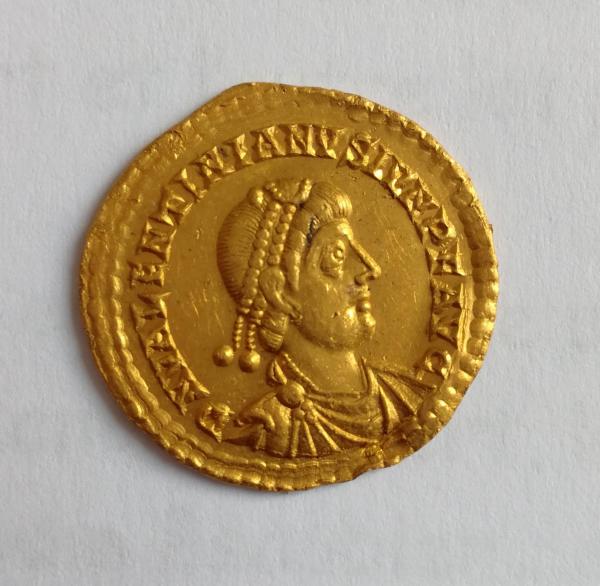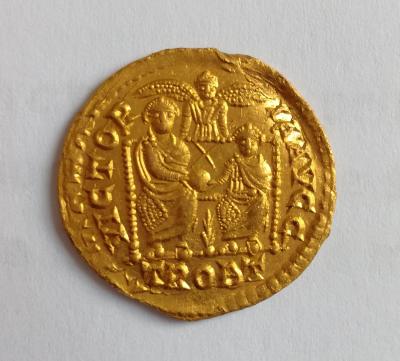Acquisitions
The Musée Rolin acquires works of art on a regular basis. The preferred acquisitions are works relating to the history and archeology of the city and the archeology. Paintings from the 19th and 20th century are also favored if they can complement those already shown in the museum. Certain acquisitions have also been made by the Société Eduenne, the local association of the friends of the museum.
Secrétaire Louis XVI orné du motif de la porte d’Arroux
Détail du secrétaire
L’acquisition de ce meuble, probablement réalisé à Autun à la fin du XVIIIe siècle, a été validé au conseil municipal du 4 avril dernier. La ville bénéficie pour cela du soutien financier de la Société éduenne et de l’Etat.
Il s’agit d’un secrétaire à abattant, d’un seul tenant constitué en partie inférieure de deux portes ouvrant sur une étagère, en partie centrale d’un abattant formant bureau et d’un tiroir au sommet. Le meuble est confectionné en marqueterie de bois, majoritairement du noyer, d’éléments de ferrure en laiton et recouvert d’une plaque de marbre.
L’histoire du meuble en bois est plus ancienne et par sa proximité avec le Morvan, Autun compte en 1789 plus de 200 ouvriers et artisans travaillant le bois (menuisiers, tonneliers, sabotiers, charrons, ébénistes, scieurs de long…). A la fin du Second Empire, on recense 22 petites entreprises artisanales et les ouvriers du bois représentent 12% de la population active en 1866.
On observe sur ce mobilier de fabrication locale une iconographie récurrente prenant comme sujet les monuments antiques encore présents dans la ville d’Autun, comme ici la Porte d’Arroux. On peut rapprocher ce secrétaire d’un bureau à cylindre contemporain, collection du musée Rolin (inv. OA 3) et présenté dans le parcours permanent, dont l’iconographie reprend le modèle des deux portes antiques de la Ville.

Front side, bust of Valentinian II, with a pearled diamede and wearing a drape, with the following Latin inscription D N VALENTINIANVS IVN P F AVG
Back side, two seated emperors are holding a globe with the following Latin inscription VICTOR-IA AVGG // TROBT.

In 2019, the Musée Rolin acquired a gold coin (solidus from the reign of Valentinian II, 378-383). This coin was minted in the town of Trier and weighs 4.44 grams and has a diameter of 2.15 cm This Roman coin was accidentally discovered during the summer of 2018 by a fisherman in the town of Autun. It is an isolated coin which was buried in the bed of the river, and the summer drought brought it up to the surface of a sandbank. The fisherman immediately approached the museum, which was able to identify the coin.
This piece joined the numismatic collections of the Musée Rolin. Indeed, a large collection of ancient coins was given to the city of Autun during the creation of its museum. This Valentinian II solidus has its place in the museum's collection because of its exceptional quality. Moreover, its immediate discovery near the Porte d´Arroux is a testimony to this major axis of the Roman city, leading to the Agrippa road heading North.
Solidus : name given to the gold currency created in the Roman Empire in the beginning of the 4th century. This coin was of exceptional monetary stability, and was later usedas the basis of the monetary system of the Byzantine Empire. It is the ancestor of the medieval sou.
